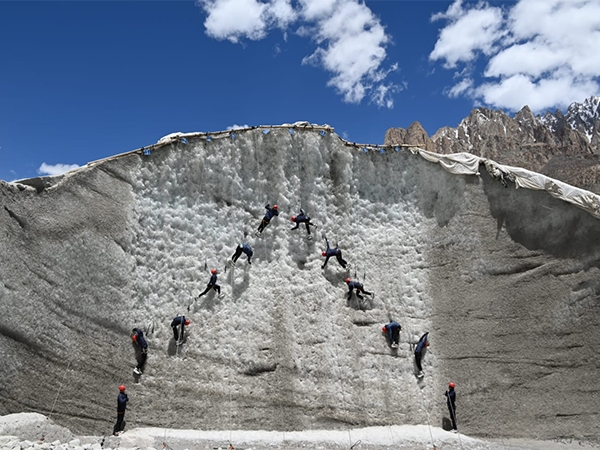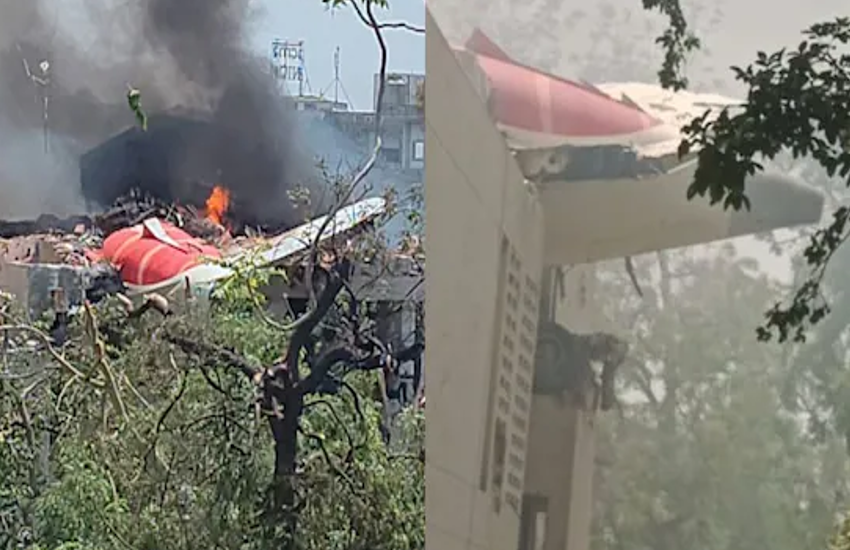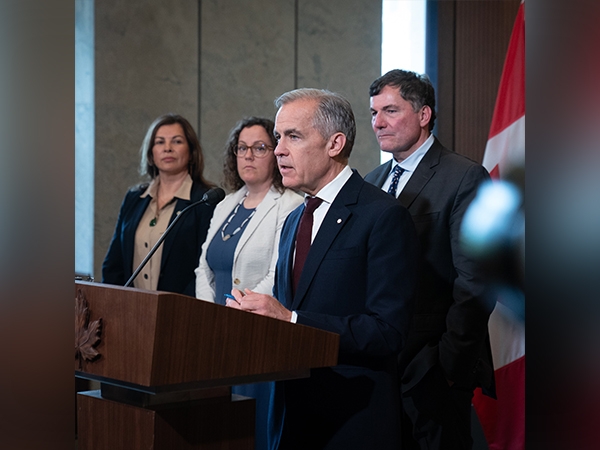Farming isn't viable anymore: Yogendra Yadav before Kisan Mukti Yatra

Agricultural distress is not new in India. Farmers in several states have been committing suicide for almost two decades now, raising serious questions about the viability of farming as an option. The latest to join this league is Madhya Pradesh.
The Shivraj Singh Chauhan government may have been trying to project a rosy picture of MP in all fields, including agriculture, but the situation in the ground has proved to be otherwise. The violence that erupted in Mandsaur last month was unprecedented in the state.
Five farmers were killed and several others injured in police firing in the district. Opposition parties claimed more than 50 farmers killed themselves since unrest erupted. A similar narrative is being played out in other states where farmers continue to take their lives due to a host of reasons including government's apathy towards their plight.
The Mandsaur incident was successful in putting the spotlight on the distress across the country. It has been accumulating over the years largely because of the exponential rise in the input costs of farming, falling prices of produce and faulty government policies and priorities.
While 2014 and 2015 were marred by drought, good monsoon last year resulted in bumper yield which had a cascading effect on output prices leading to farmers not even recovering input costs. The widespread phenomenon led to distress forcing farmers to hit the streets demanding better prices for their crops.
The crash in prices was not confined to one particular crop but to crops of all kinds which led to a severe squeeze in farm income. Moreover, the decision to cut down spending on agriculture has further alienated the agrarian community that hardly gets any support from the government. These factors are slowly making farming a non-viable economic activity in the country.
What happened at Mandsaur was the result of this persistent neglect that eventually led to violent outbursts by farmers whose survival was at stake. To understand this national crisis, Catch spoke to Yoginder Yadav who is part of a rainbow coalition of farmer organisations that is organising kisan yatra in different states highlighting the issues that plague the agrarian economy.
Farmers across the country are committing suicides on a daily basis which is a sign of the severe farm distress across the country. What according to you is the real reason behind this distress?
Farmer suicides are not necessarily the best indicator of the kind of stress the farming community is in. Why I say this is because that some regions may have low suicide rates but the distress could be as high as it is in regions where suicide rates are high. We need to distance ourselves from specific issues and look at the larger picture. The fundamental thing is that one of the prominent reasons for farm distress is because of the crash in the prices in a good harvest year.
After two years of drought, 2016 witnessed more than average rainfall in many areas, including MP. Farmers were hoping that with their bumper crops they would be able to pay off their loans from banks and money lenders. However, when they reached the mandis with their produce, prices of all commodities had crashed because of a demand-supply mismatch.
Demonetisation and the import-export policy of the government too led to this crisis snowballing and taking the form of protest. Even government's policy to contain inflation further added to their woes. That is the immediate cause.
Then there are the economic and ecological reasons. The former has made farming a non-viable and loss making proposition because crop prices have fallen while input prices have shot up exponentially. Now farmers can't handle bad monsoons which is leading to suicides across the country.
The ecological reasons pertain to climate change wherein the weather has become far more unpredictable. Green Revolution also added to the crisis since resources have been over-exploited and have reached a dead end. These factors when combined together are threatening farmer survival in this country.
So, what according to you is the way out of this crisis?
There are short term and long term solutions. In the short term, the government must minimally honour its commitment to providing Minimum Support Price (MSP) to farmers which guarantees farmers a floor price for their produce.
Government's own statistics claim that only 6% of the farmers are able to sell their produce at MSP while the rest are all dependent on market forces. Short term measures also include government purchasing certain crops which will save the farmers from fluctuations in the market. Moreover, the government should also protect farmers from natural calamities and crop failures. The Prime Minister Bima Yojna does not protect all farmers, therefore, there is a need general insurance for all farmers to protect them from the vagaries of this weather and pests.
For the long term solutions, one has to realise that the nature of Indian agriculture has changed over the years. There are legal measures which assure certain minimum income. Secondly, there is a need to rethink modern agriculture post the Green Revolution which has reached its limit. For instance, Haryana should stop growing rice since it does not have enough water for a water intensive crop. In the long-term, we need to adopt more sustainable practices. In the end, economic and ecology of agriculture have to be married to seek desired results.
Tell us more about the Kisan Mukti Yatra that you are a part of...
The Kisan Mukti Yatra is being organised by the new umbrella organisation of farmers – Akhil Bharatiya Kisan Sangharsh Samiti (ABKSS) – which has 160 farmer organisations from wide spectrum across the ideological divide.
On 6 July, the Mandsaur incident would complete a month and we would start our yatra from Mandsaur and will commence in Delhi on 18 July which coincides with the Monsoon Session of the Parliament.
During the yatra, volunteers would spend three days in MP, two in Maharashtra and Gujarat, four in Rajasthan while organising meetings in UP and Haryana in the last leg of the yatra. It would then converge as dharna at Jantar Mantar in Delhi on 18 July.
What are your demands?
Our first demand is that remunerative prices be implemented as recommended by the Swaminathan Committee wherein the government should provide 50 per cent profit above the production cost of the farmers. In fact, Mr Narendra Modi had promised this in his election manifesto.
Secondly, we want freedom from loans be it commercial, cooperative or from a private lender. Both the demands are linked in a way. Waiving of old debt would make no sense if there is no assured income which should come from remunerative pricing. Or else farmers would get dependent on loans which would further push them in severe distress.
There is also a perception that increasing farming of horticulture crops or cash crops is also the reason for the widespread distress across the country.
Farmers did not undertake such farming themselves. In fact, it was the government that recommended these crops to the farmers. For example, they were pushed to grow soybean because earlier it yielded higher profit margins. If one visits the Ministry of Agriculture website, it would be clear as to who had been pushing for such crops.
What farmers were traditionally growing had no profit margins and it was then that the government recommended these magic crops like Soybean and BT Cotton which assured great returns. Finally, farmers come to terms with this modern age and start to grow these crops.
What they didn't know was that the government was experimenting while the consequences have to be weathered by the farmers. This created chaos and farmers became guinea pigs. Once the price of all such crops crashed they couldn't take it anymore which led to a Mandsaur-like situation.
What sort of impact did demonetisation have on the farmer distress?
On the ground, farmers complained that demonetisation did have an impact during the sowing season as there was no cash to buy seeds, fertilisers and other input costs. However, the shortage of cash during the sowing seasons doesn't reflect in the bumper production. I agree that mandis operate on cash and not on credit or digitised money. So because of the cash crunch, demand would have shrunk which added to the distress.






![BJP's Kapil Mishra recreates Shankar Mahadevan’s ‘Breathless’ song to highlight Delhi pollution [WATCH] BJP's Kapil Mishra recreates Shankar Mahadevan’s ‘Breathless’ song to highlight Delhi pollution [WATCH]](https://images.catchnews.com/upload/2022/11/03/kapil-mishra_240884_300x172.png)

![Anupam Kher shares pictures of his toned body on 67th birthday [MUST SEE] Anupam Kher shares pictures of his toned body on 67th birthday [MUST SEE]](https://images.catchnews.com/upload/2022/03/07/Anupam_kher_231145_300x172.jpg)






